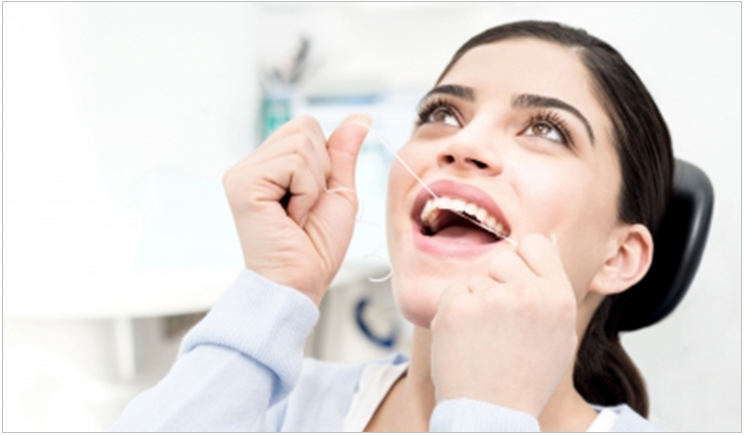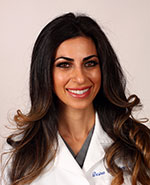
The release of the article in The New York Times calling flossing “overrated” has caused a plethora of patients to question the need for this essential oral hygiene practice. As dental professionals, we all know the importance of disrupting the biofilm with floss. But how do we convey this information to our patients considering the lack of research specific to this topic?
Whether they admit it or not, most patients do not floss regularly. The popularity of the article was rooted in an emotional release, not by any science. By arguing that there was no research supporting flossing’s effectiveness, patients were given a release from any guilt they feel for not following our recommendations. The emotional power of the article gives us a clue as to how to help our patients.
I suggest starting with an educational component. I give my patients a very graphic visual of what happens when you eat, how oral bacteria eat the food that you eat, and how they produce waste right onto your teeth that is very acidic and, over time, can cause decay.
Next is the emotional component. Ask your patients who do not floss to floss and smell the floss when they are finished. They will be shocked at the odor.
The final component is the empowering component where the patient solves the problem. I ask my patients to put floss everywhere from their car to their shower, their kitchen, thier couch, or their coffee table. This ensures they have access to floss and can easily and more conveniently take the time each day to complete the task.
Patient education is the key to successful treatment and ultimately a successful practice. These educational moments are an opportunity to become philosophical with your patients. It’s important to discuss preventive care with your patients, but they need to understand where dental knowledge comes from and how research is synthesized.
Explain to your patients that we also don’t have randomized clinical trials on the harm done by cornhusks left to decay between teeth. But we do have plenty of articles about plaque, the failure to remove it, and the benefits of its removal.
Explaining what drives research and the limitations of studies will help patients to learn the difference between consuming information and being a connoisseur of it. This ultimately builds trust, and your patients will return with any problems they have once they realize that you have put time, effort, and education into the advice that you are giving.
If we consider our own behavior in the dental chair, we can benefit from a fresh perspective. When we go to colleagues for our own treatment, we already have decided what the issue is and what should be done. We just need them to do it. We have extensive experience, knowledge, and understanding, so there is less emotion and more logic involved in our decisions.
However, if our colleagues tell us that it’s not possible to carry out the specific treatment or that they have discovered something else, we may ask to see or to be informed before we go along with their recommendation. If our patients understand as much as we do and are simply coming to us to carry out the treatment they already have in mind, then the experience would be relatively the same.
With Google, some of our patients are very well informed, and some may already be thinking that they are coming to us to carry out a treatment that they have decided to have done. We see this with cosmetic treatment and often with procedures rooted in pain removal.
However, if we take the time to educate our patients, truly sit down and spend time until they understand, we can make them partners in the treatment and prevent them from being misinformed. This misinformation is what has resulted from the flossing article.
In no way has any dentist or hygienist stopped flossing because of the lack of randomized controlled trials regarding its benefits. We need to take back our patients’ attention and educate them so they won’t be misinformed and so they will come to side with us through knowledge, understanding, and experience.
We have social media, and we have science. We have our patients’ attention, and we have the position of authority. We cannot squander this opportunity by being an authority that can’t back up a claim.
Don’t make a claim. Build a case. Don’t just tell your patients to do things. Explain why they should. Take every step to educate and create a well informed patient who consumes information the way we do, who decides things knowing that there is no perfect decision, just a better decision.
With education, we know that you don’t always need specific articles. And at times, specific articles may not apply to every situation. We know how to apply the body of science to problems that arise every day. If our patients see this picture through our eyes, they will see that the article challenging flossing was in itself overrated.
 Dr. Desiree Yazdan is an expert in cosmetic dentistry taking pride in offering the finest in patient care and services to each and every patient individually. Having completed research on enamel development and receiving her master’s in craniofacial biology and doctor of dental surgery from the University of Southern California, Dr. Yazdan’s expert training and professionalism have added to her keen eye for beauty. At the Center for Reconstructive Dentistry, she utilizes her expertise and passion to create smile transformation. Check out Dr. Yazdan’s Instagram page for daily smile makeovers, health, and beauty tips by following @DrYazdan. For more information, call (949) 644-6988 or go to dryazdan.com.
Dr. Desiree Yazdan is an expert in cosmetic dentistry taking pride in offering the finest in patient care and services to each and every patient individually. Having completed research on enamel development and receiving her master’s in craniofacial biology and doctor of dental surgery from the University of Southern California, Dr. Yazdan’s expert training and professionalism have added to her keen eye for beauty. At the Center for Reconstructive Dentistry, she utilizes her expertise and passion to create smile transformation. Check out Dr. Yazdan’s Instagram page for daily smile makeovers, health, and beauty tips by following @DrYazdan. For more information, call (949) 644-6988 or go to dryazdan.com.
Related Articles
Survey Proves Your Patients Lie About Flossing (Gasp!)











